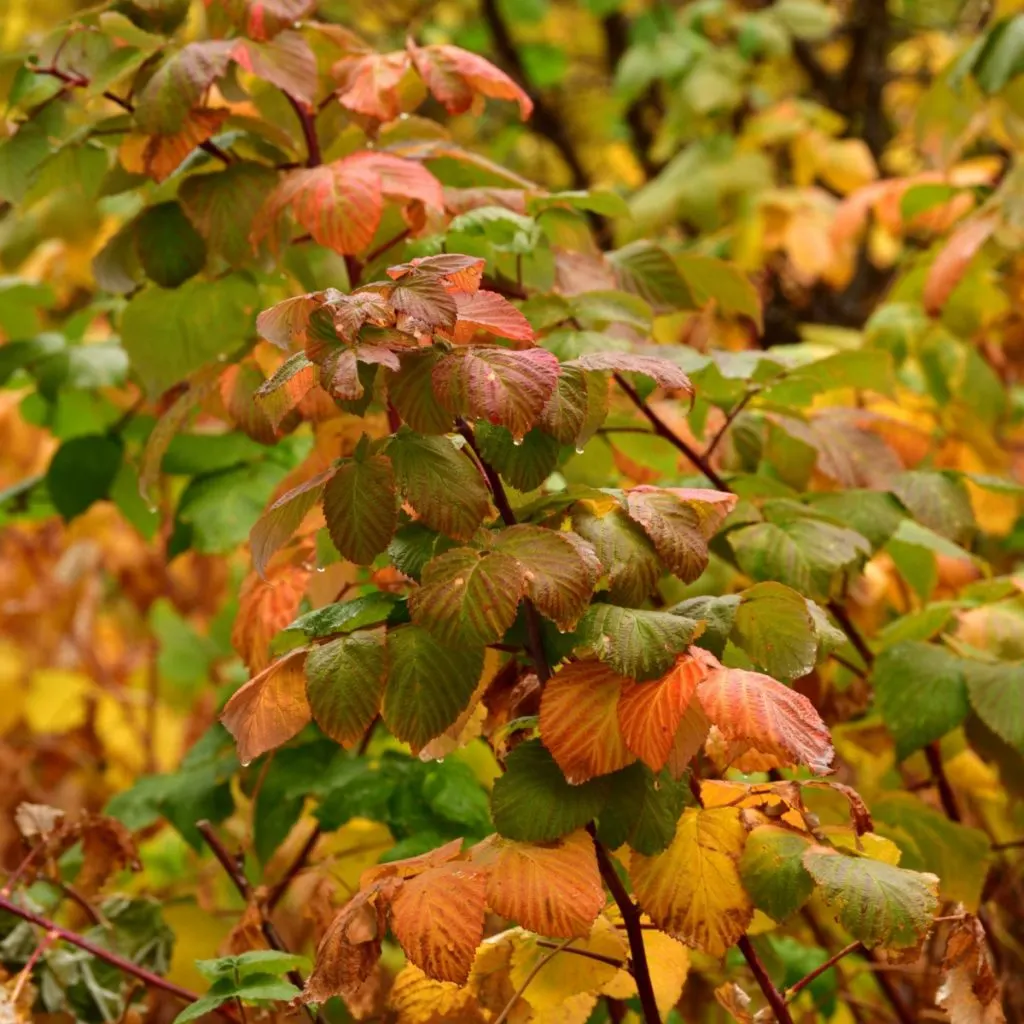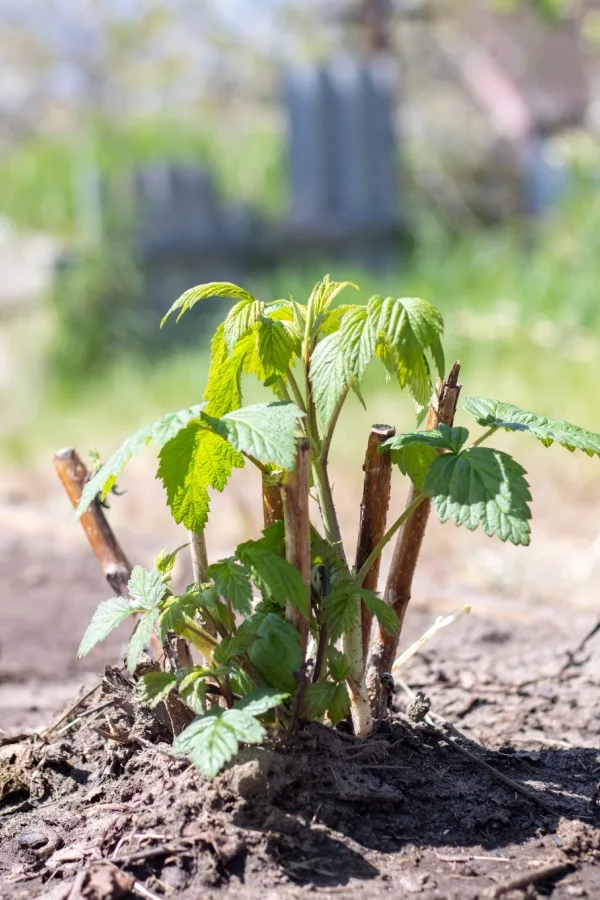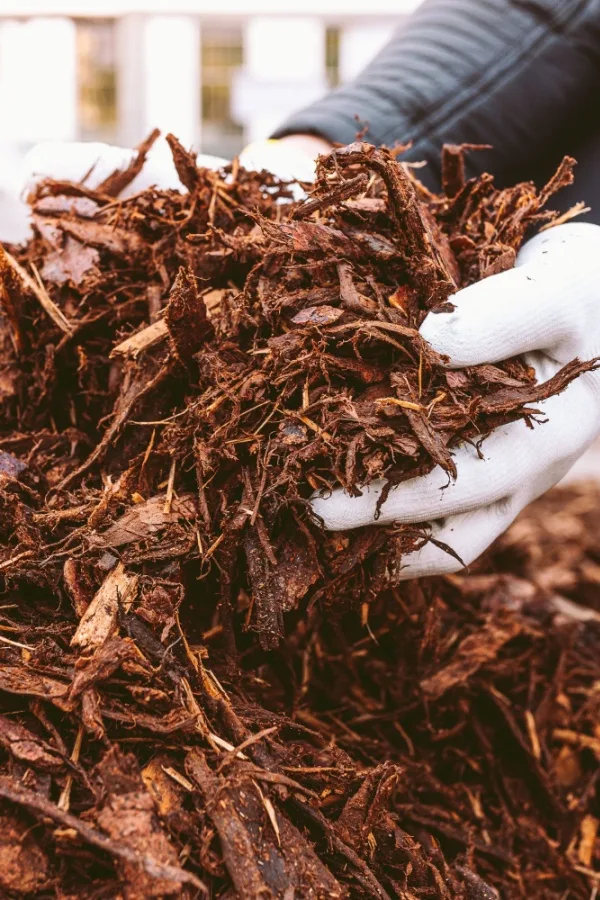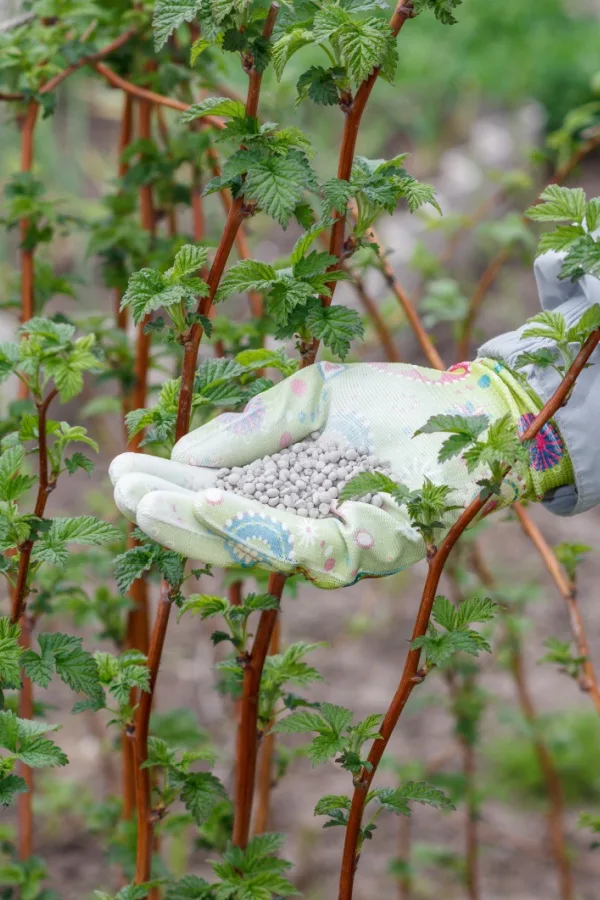Believe it or not, what you do with your blackberry and raspberry plants in the fall can not only help them survive the upcoming winter, but also make a huge difference in their health and productivity next year!
Blackberry and raspberry bushes are two of the easiest perennial fruits to grow. Once established, they can provide you with year after year of amazing harvests, all with fairly little effort. But if there is one time of the year that matters when it comes to care – it’s in the fall!
As you will see below, there are two very important fall chores for blackberries and raspberries – pruning and mulching. Pruning needs to be done in early to late fall after the plants have finished producing. However, knowing what to parts to prune – and what parts to leave alone can make all the difference between a big harvest – or little to no harvest at all!

Mulching is also very critical for preventing plants from becoming vulnerable to the back-and-forth thawing and freezing that comes along with the winter months. But again, knowing when and how much mulch to put down is vital to their overall success.
So how do you know how to get both of these tasks just right? It all starts by knowing a little bit about how blackberries and raspberries grow and produce. And from there – putting a few simple tips for success into practice!
How To Care For Blackberry & Raspberry Plants In The Fall
How Blackberry & Raspberry Bushes Grow
It’s important to know exactly how both blackberry and raspberry plants grow in order to properly care for them in the fall.
The crowns and roots of both these plants are perennials. This means that they continue to grow and expand each year. Their canes, however – the stems that come up out of the ground – are biennials – which means that they only live for two years before dying.
During the first year, the canes grow out of the ground. While they produce foliage and leaves during the first spring and summer, they do not produce any fruit. The second year canes, however, are what produce blooms and fruit on short offshoots.

After the second year blackberry and raspberry canes have finished producing, they die off during the fall. Each year, you will have a combination of both first year and second year canes, providing you with a constant harvest. But when it comes to pruning – you need to be sure to only prune away the second year canes only!
How To Identify First and Second Year Canes – What To Do With Blackberry & Raspberry Plants In The Fall
So how can you tell the difference between first and second year canes? The easiest and most simplest way is by their color.
Brand new canes are typically light green in color and a bit more tender. Second year canes tend to be darker in color and woody. In addition, unlike first year canes, there will be little offshoots growing off of the second year canes, which are what produce the blooms and fruit.
Pruning 2nd Year Canes – What To Do With Blackberry & Raspberry Plants In The Fall
So why is pruning so important for blackberries and raspberries? Because it allows only the healthiest and strongest first year canes to stick around for growing fruit next year. And even more, it improves the airflow between plants allowing for more pollination and a bigger harvest.

Although you can technically prune in the spring, it’s much easier to identify the difference between first and second year canes during the fall. And the key to success is to prune only the correct canes.
The Steps Of Pruning
The first step is to remove any canes that are diseased, damaged, or dead. Getting these branches out of the way makes room for the first year canes to grow.
Next, you want to remove all of the second year canes. Now that they have finished producing, they will no longer grow new fruit in the following year and will eventually die anyway. They serve no purpose in year three and beyond aside from getting in the way.
If needed, you can also lightly prune the first year canes. This is needed in cases where the growth has become too thick and unruly.
The goal is to have around 4 to 5 first year canes that will produce fruit next year for every square foot of growing space. You should also top off any canes that are growing too tall.
Mulching – What To Do With Blackberry & Raspberry Plants In The Fall
When you live in locations that have milder winters, there isn’t much care you need to do beyond pruning for blackberry and raspberry plants in the fall. However, for those growing in locations with freezing winter temperatures, taking an additional step of protection is encouraged.

Mulching helps to protect the plant’s roots and crowns from the constant freezing and thawing that can occur in northern locations. It can also help to lessen competing weeds from taking over your growing spaces.
To protect raspberry and blackberry plants in the fall, lay down a thick three to five-inch layer of mulch. For this, it’s best to use a natural material like untreated wood chips, straw, or shredded leaves.
For places that experience high winds and/or harsh snow, laying the canes down on the ground prior to mulching is a great way to protect them even more from winter damage. Once down, they can then be covered with mulch for added protection.
Watering & Fertilizing – What To Do With Blackberry & Raspberry Plants In The Fall
The moisture blackberries and raspberries receive in the fall is critical for next year’s production as well. Continue to water plants well during the fall months if conditions are dry. Even though they are done producing fruit, the bushes still require at least an inch of rainwater or hand watering each week. You can stop watering once the first frost occurs.

One chore you don’t want to do in the fall for your blackberry and raspberry bushes is to fertilize them. Doing so at this point in time will only encourage plants to push out new growth or start budding.
Any new growth is then susceptible to damage from frost or freezing temperatures. This puts your whole plant at risk of damage. Instead, wait until you start to see new buds forming during the following spring before fertilizing with an all purpose granular feeding.
By properly pruning, mulching and watering your plants in the fall months, you will be able to enjoy stronger and healthier blackberry and raspberry plants next year! And if you happen to be tired of dealing with thorns when harvesting, be sure to check out our article on growing thornless: “How To Grow Thornless Blackberries – Harvest Blackberries With Ease!”
Simple Garden Life
Follow Our Facebook Page For Even More Great Tips! Simple Garden Life Facebook Page
Simple Garden Life is a website dedicated to keeping gardening fun, simple and enjoyable! We publish two new articles each week along with a new garden podcast episode every two weeks. This article may contain affiliate links.
